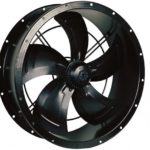Fresh air, saturated with oxygen - what is usually called a “healthy atmosphere” - is a prerequisite for comfortable and cozy housing. But the peculiarities of the layout of modern houses, the installation of metal-plastic windows make the volume of natural ventilation insufficient. But modern apartments, with their abundance of plastic and chemicals, especially need regular air exchange. Installing a forced ventilation system solves the problem of air circulation. The fan is the main component of these systems. Let us consider in more detail what devices are, features of their design and operation.
Design features and types
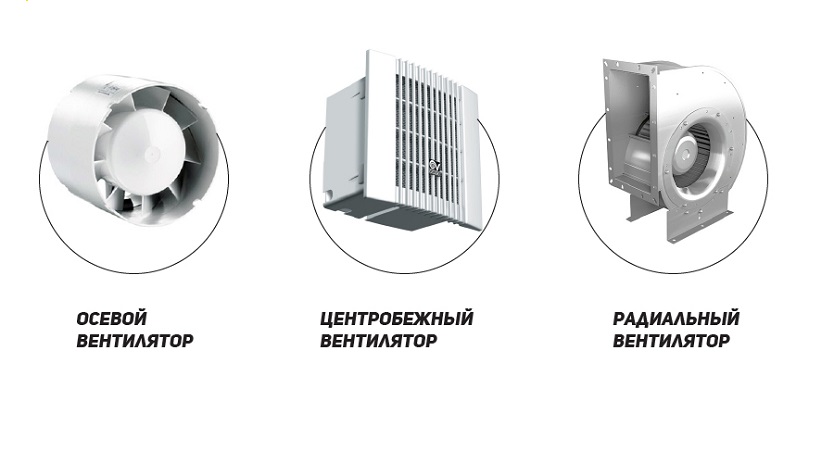
A fan is a mechanical device intended for the supply, removal and mixing of air masses. Air circulation is formed due to the creation of a pressure difference that occurs between the outlet and inlet channels of the ventilation unit. Such equipment is classified by purpose, place and installation methods, performance, technical features. The most common grouping method is by attribute, or device. There are five types of fans.
![]() See also - 10 best bathroom fans
See also - 10 best bathroom fans
Axial
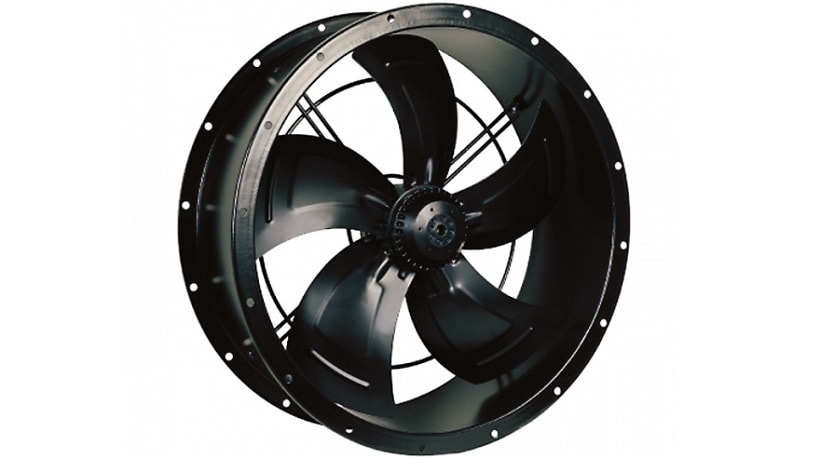
Axial (another name - axial) models have become widespread thanks to a simple and reliable design:
- the main element is a cylindrical body / casing, in which special mounting holes are provided for mounting the fan;
- a wheel with blades - the blades are firmly fixed, the selection of the distance and angle of rotation of the blades allows you to adjust the pressure and speed of the air flow;
- drive - an electric motor is built into the device itself, provides rotation of a wheel with blades;
- manifolds, fairings and diffusers - improve the aerodynamic characteristics of the model and its performance, reduce hydraulic losses.
The principle of operation of the axial fan - the blades due to rotation capture air and move it through the device. The air flow moves along the axis of rotation of the wheel with the blades, and in the radial direction (i.e. from the center to the edges of the housing) there is practically no movement.
Benefits:
- compact size, so they do not require much space for installation;
- high efficiency, with low power consumption, you can get a dense air flow;
- low price;
- low noise level;
- ease of operation, maintenance and repair.
An axial fan can also be used in a reversible direction, but then its efficiency is reduced by 40-50%.There is one drawback - the axial type of equipment cannot create a very powerful air flow, which is necessary at industrial facilities. Therefore, they received the greatest distribution in everyday life and home ventilation systems, for example, as an exhaust in the kitchen or bathroom.
![]() See also - Bathroom exhaust fan
See also - Bathroom exhaust fan
Radial
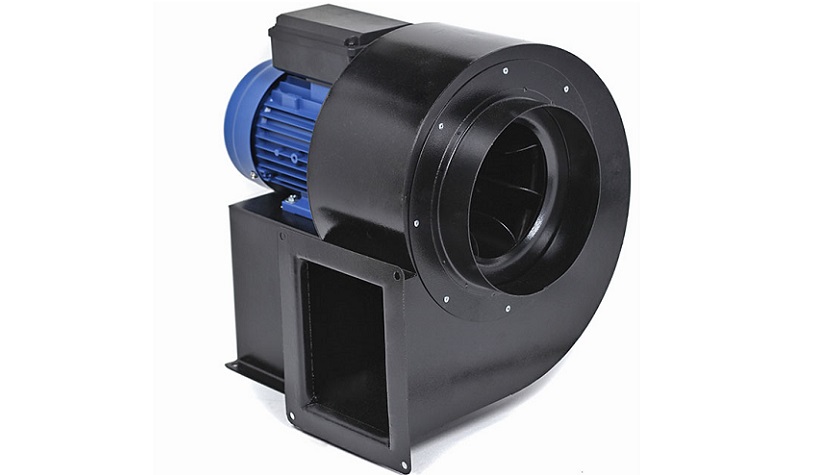
The basis of a radial fan (also called a centrifugal fan) is made up of a casing, shaped like a volute, inside which an impeller is located. When rotating, centrifugal force is generated which draws air through the suction port in the center of the device. After that, the air mass is directed to the peripheral part of the fan, from where it is blown into the ventilated room through the duct. Another feature - the air flow enters it in the axial direction, and is pushed moving radially (its direction is tangent to the housing casing), it is always perpendicular to the incoming stream.
The main working element is a cylinder with blades fixed around the circumference at the same distance. Depending on the shape and location of the blades, different effects can be achieved:
- bent forward - create high pressure and work with large volumes of air;
- Curved back - avoids dust build-up, suitable for work in environments with high oppression;
- aerodynamic wing - very low noise figure and high performance.
The main advantages of radial fans are obtaining a high air flow pressure with sufficiently small dimensions, durability, low noise level and the ability to operate in continuous mode. Therefore, they are widely used in industry, especially where powerful constant ventilation is required - in large office buildings and shopping and entertainment complexes, supermarkets, warehouses, garages, etc. Due to the ability to quickly remove polluted air, they are actively used in hazardous industries. In everyday life, radial fans are increasingly used in kitchen hoods and duct ventilation.
![]() See also - How a Bladeless Fan Works
See also - How a Bladeless Fan Works
Diagonal
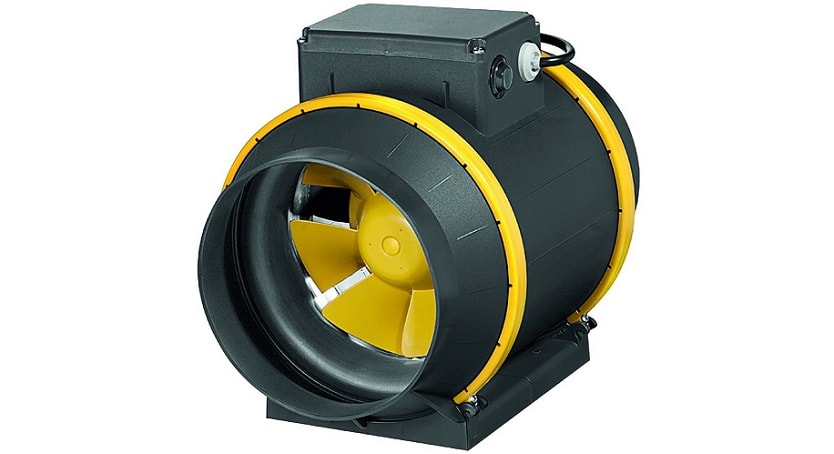
The design feature of the diagonal fan is a combination of the advantages of axial and radial types of fans. The use of a conical shape of the casing and the impeller of a special shape made it possible to increase the speed of movement of air masses. The design of the diagonal model is a compromise solution that optimizes three indicators at once - performance and noise level while maintaining compact dimensions. Diagonal fans are mounted in ventilation systems with long ducts.
Diametrical
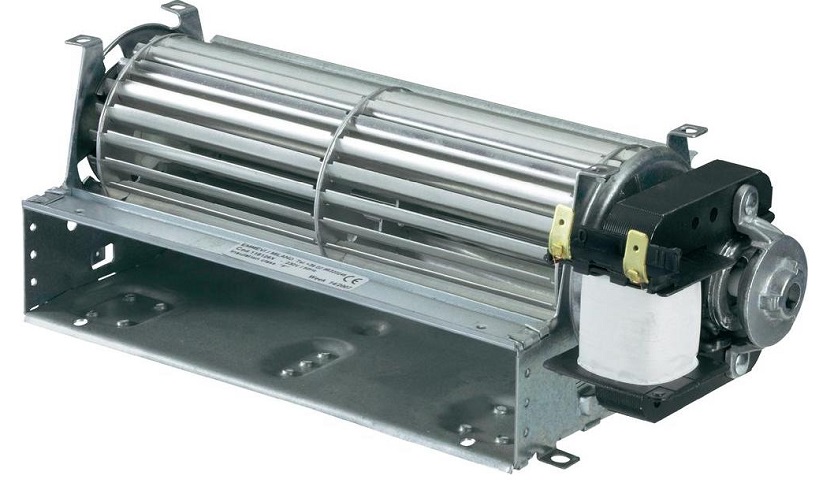
Cross-flow (tangential) fan with an elongated casing, which has a branch pipe and a diffuser. A drum-type impeller is installed inside. Inclined blades provide double movement of air perpendicular to the axis of rotation. The main advantage is a uniform flat and wide air flow. Used in thermal curtains and fan coils.
Direct-flow
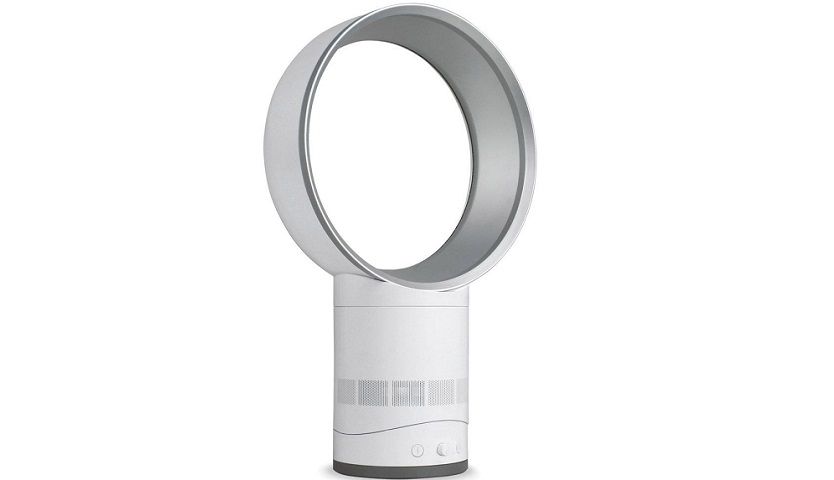
The device and principle of operation of this type of fan is very different from those discussed above. This is an absolutely safe device, since there are no blades in it. You can choose a floor-standing option for installation in rooms where children or pets have access.
The air flow in the direct-flow model is formed by a special turbine, which is installed in the base. The turbine draws in air through the slots in the base, compresses it strongly and directs it into a frame with very narrow directional slots. The air coming out under pressure, according to the laws of aerodynamics, pulls other adjacent layers of air. In the rear zone of the fan, a vacuum zone is formed, into which air masses rush.This technology of "air multiplication" makes it possible to obtain an air flow passing through the frame, which is 15–20 times greater than the volume that is pumped by the turbine. The frame can have any shape - from a perfect circle to a very elongated oval, which opens up very great opportunities for designers.
Additional advantages over traditional types of technology:
- the ability to smoothly adjust the intensity of the air flow, its direction - for this it is enough to turn the ring;
- saving electricity - with the same performance as an axial device, the direct-flow device consumes 20% less electricity.
The main disadvantages of a direct-flow fan are the high price and great noise, because air passes through narrow slots at a speed of 85–90 km / h.
![]() See also - How to choose the perfect air conditioner for your home and apartment
See also - How to choose the perfect air conditioner for your home and apartment

